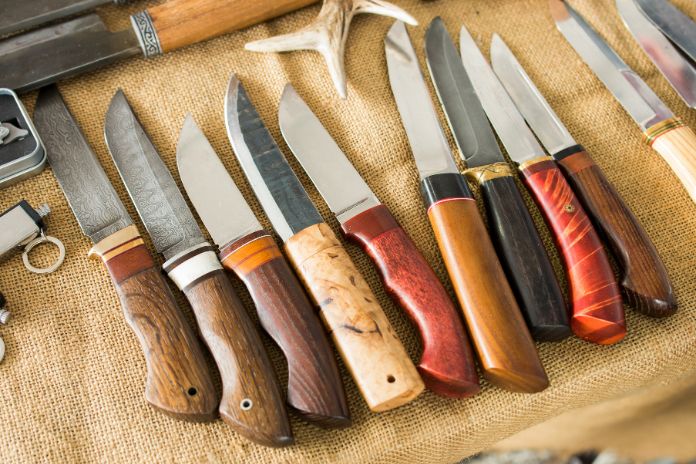
A high-quality knife collection is an investment, so knowing how to properly maintain your knives to keep them in top condition is essential. Explore the best practices and tips for maintaining your knife collection, including cleaning, sharpening, and storage basics.
Clean the Knives
Regular cleaning is crucial for the longevity of your knives. Follow these steps to clean your blades safely and effectively:
- Wash by hand: Avoid using a dishwasher to wash knives, as it can damage their blades and handles. Instead, wash your knives by hand using warm, soapy water.
- Dry immediately: After washing, dry your knives thoroughly with a soft, lint-free cloth to prevent rust and corrosion.
- Oil occasionally: Periodically apply a few drops of food-safe mineral oil on the blade and handle, especially if you own carbon steel knives. This step helps prevent rust and keeps the handle from drying out.
Always be cautious when handling sharp knives during cleaning to prevent accidents. You can use a knife-safe brush to clean hard-to-reach areas on the blade.
Sharpen the Knives
Dull knives can be dangerous and inefficient for cutting tasks. Keep your blades sharp with these essential tools and techniques:
- Sharpening stone: Also known as a whetstone, this tool is ideal for sharpening knives. Soak the stone in water for about 10 minutes before sharpening your blades. Remember to use the correct angle in this process; the ultimate guide to knife sharpening angles and the blade’s manufacturers’ instructions will help.
- Honing rod: A honing rod or steel realigns the blade’s edge after regular use, prolonging the knife’s sharpness. Hold the knife at a 20-degree angle and swipe it down the rod while maintaining consistent pressure.
- Sharpening frequency: Sharpen your knives as necessary, depending on usage. If you use your knives to cook at home, sharpening every few months will be fine. Conversely, if you use your blades for frequent, heavy-duty tasks while camping or hunting, then more frequent sharpening is essential.
Get the Right Storage for Your Knives
Properly storing your knives helps protect the blades from damage and keeps them sharp. Here are some storage options to consider:
- Knife block: A knife block provides a dedicated space for each knife, protecting the blades from damage. Ensure the block is made from a material that won’t dull the blades, such as wood or bamboo.
- Magnetic strip: A magnetic strip mounted on the wall allows you to store your knives safely while showcasing their beauty. Make sure the strip is strong enough to hold the knives securely.
- Sheath: For individual knives, a sheath or blade guard can protect the blade’s edge from damage during storage. Choose sheaths made from materials that won’t scratch the blade, such as plastic or felt-lined leather.
Learning how to maintain your knife collection properly is essential for preserving the longevity, functionality, and beauty of your investment. By following these cleaning, sharpening, and storage tips, you can keep your knives in top condition and enjoy them for years to come.







